"Can I use my granddad's antique Edward Whymper style ice axe?"
"Could I climb Mont Blanc in sturdy trainers?"
"Might I need lace up crampons?"
Before you ask, the answer to all the above is... No!!! We do however realise that for each one of the seemingly off-the-wall questions there are many other enquiries that crop up. So, in an attempt to make packing for your summer alpine trip easier, I am going to explain in this blog the sort of hardware you will need in the summer; covering mountaineering boots, crampons, ice axes, helmets, and harnesses.
Mountain Boots
Before hitting the trail you need to make sure you have a sturdy pair of suitable boots. Mountaineering boots are classified by their sole stiffness from B1 to B3. B1 are flexible trekking boots but they will take a strap on walking crampon (C1) and are light and comfortable for walking in. The B1 boots recommended below can be fine for less technical Alpine ascents like Mont Blanc if the weather is not to cold. Any B1 boot that looks a lower spec than the ones shown probably wont be up to the job. B2 boots are stiffer, warmer and will accept a semi rigid or walking crampon (C1 or C2). In alpine summers B2 boots are my favourite, they are a good compromise between comfort ,weight, warmth and dexterity. They're ideal for classic mountaineering and mid-grade mixed climbing. Some are warmer than others so avoid super light boots if doing lots of high snowy peaks like Mt Blanc or Monterosa. B3 boots are fully rigid and give more support for steep ice and mixed climbing. These will take any crampon (C1, C2 or C3). These are less comfortable, heavier and more expensive! I only use these boots when the ice gets over 60 degrees or mixed climbing goes above the alpine grade of TD. Nowadays leather and synthetic boots are very comfortable, breathable and warm. Gone are the days (thank goodness) where you had to clomp up the approach paths to glaciers in some huge, uncomfortable, sweaty plastic monstrosities. These have virtually died out: even in the high altitude environment synthetic composite boots are now king.
B1 Flexible
These are ideal for all glacier trails, via ferrata and easy mountaineering. You might get cold feet in some of them on Mont Blanc though! If you already have some similar lighter weight boots they might do for glacier trails but bear in mind they need to be water proof and have some stiffness to accept a walking crampon. Soft fabric trekking boots won't stand up to the rugged terrain, snow and crampon straps.
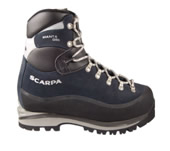 |
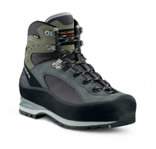 |
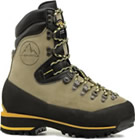 |
| Scarpa - Manta |
Scarpa - Cristallo GTX |
La Sportiva - Nepal Trek |
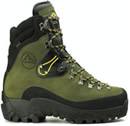 |
 |
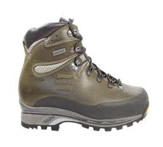 |
| La Sportiva - Karakorum |
Meindl - Vakum |
Zamberlan - Vios Plus GTR |
B2 Semi Rigid
Suited to more technical mountaineering such as the the Matterhorn, Eiger, Oberland 4000ers. If you are doing any of our introductory or intermediate courses it is worth considering these boots as many people on introductory trips eventually progress to do more technical mountaineering.
B3 Fully Stiffened
If you are looking for boots to tick every box (Technical Alpinism, Scottish Mixed and Steep Ice) then these are the boots to buy.
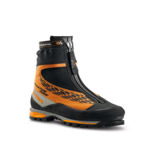 |
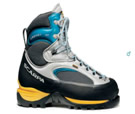 |
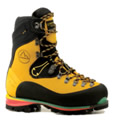 |
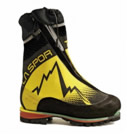 |
| Scarpa - Phantom Guide / Ultra |
Scarpa - Jurrasses Pro Freney |
La Sportiva - Nepal Evo |
La Sportiva - Batura Pro |
There are many other brands, like Vasque, Mammut, and Meindl out there with similar boots in their ranges. Choose a boot that fits your foot, all manufacturers have different 'normal' fits. It is VERY IMPORTANT that you break your boots in before coming on a trip otherwise you will get blisters. Buy some decent walking socks and experiment with different sock combos. I use one thick pair of Bridgedale socks in some boots and a thin liner plus a thick sock in others! Custom moulded footbeds (or Superfeet) also help prevent sore arches when wearing the boots for long periods of time
Crampons
These are classified into C1 flexible, C2 semi rigid and C3 rigid. Its imperative you get crampons at least as stiff as your boots otherwise they will fall off. So you can fit any crampon to a B3 boot but you need to match C1 crampons with B1 boots and C2 or C1 crampons with B2 boots. Choose some good quality 12 point mountaineering crampons. If you have small feet or you're doing glacier trails you can get away with 10 point crampons. Anti-ball plates are essential on all crampons to prevent snow sticking to the base. For technical ice and mixed climbing a fully rigid 'lobster point' crampon is needed where the front two or single 'mono' point is vertically inclined. The way a crampon attaches to the boot usually dictates whether they will fit a B1 boot. I actually use a strap on crampon system like the Grivel New Classic or the Charlet Petzl Flexlock in most mountaineering situations as they fit any boot and are very comfy to wear. I find the heel Lever Lock C2 type crampons designed for most B2 boots dig into the soft part of the boot and give me sore heels. When ice or mixed climbing most C3 crampons have either a Heel Lever Lock or Side Lock for attachment.
C1 Crampons (fits any boot B1-B3)
For glaciated terrain trekking and easier alpine routes Beginner to Intermediate. **Please notice the fitting type in brackets**
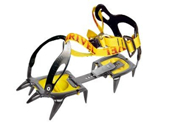 |
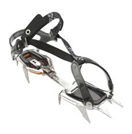 |
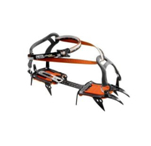 |
| Grivel - G10 (new classic) |
Black Diamond - Contact (strap) |
Petzl Charlet - Irvis (flexlock) |
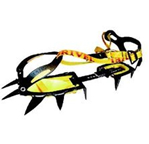 |
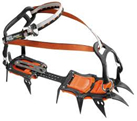 |
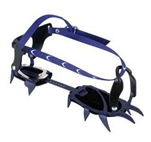 |
| Grivel - G12 (new classic) |
Petzl Charlet - Vasak (flexlock) |
Camp - Stalker / C10 (strap) |
C2 Crampons (fits B2-B3 boots)
For general mountaineering use Intermediate to Advanced
 |
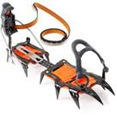 |
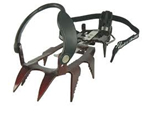 |
| Grivel - G12 (newmatic) |
Petzl Charlet - Vasak (leverlock) |
DMM - Aiguille |
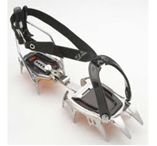 |
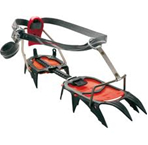 |
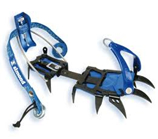 |
| Black Diamond - Serac |
Camp - C12 (crampomatic) |
Simond - Makalu (rapid) |
C3 Crampons
For Advanced Mountaineering, steep ice and mixed climbing
 |
 |
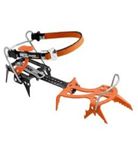 |
| Petzle Charlet - Sarken |
Grivel - G14 |
Petzl Charlet - Dart |
As with boots there are many other brands out there, Simond, Black Diamond and Camp to name but a few. The examples given are the most readily available and illustrate the most common types of crampon fittings needed for each boot B1 to B3.
Ice Axes
"It's just a piece of metal with a pointy end!" Yes, in Mr Whymper's day, but axes have come along way since then. They come in lots of colours, shapes, sizes and weights but at the end of the day you get what you pay for. Some of the cheaper walking axes are good walking sticks but useless when you need to use the pick, adze or spike in icy conditions. Go for one that is easy to hold and has a quality forged head. The ice axe length is dependent on your height so anywhere between 50cm (small people) up to 70cm (tall people). As a rule of thumb I'm 5ft 7inches and use a 55cm or 60cm axe in the summer. The ice axe leash should be removed to prevent tripping or general faffing (mountain guides hate this). If you're climbing hard mixed or steep ice a pair of technical ice axes will be needed. These are very specialist and not suitable for general mountaineering.
Walking / Trekking Ice Axes
If on a budget these will do but better to save for a mountaineering one.
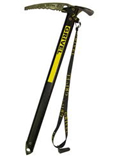 |
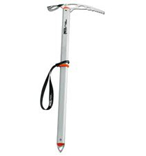 |
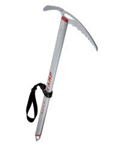 |
| Grivel - Haute Route |
Petzl Charlet - Snow Walker |
Camp - Neve |
Mountaineering Ice Axes
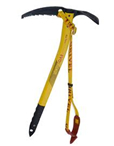 |
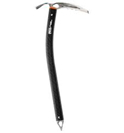 |
 |
| Grivel - Airtech Evo |
Petzl Charlet - Summit |
Black Diamond - Raven Grip |
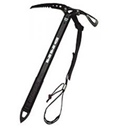 |
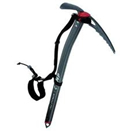 |
 |
| DMM - Raptor |
Camp - Alpina |
Simond - Metallic |
Technical Ice Axes
Most people climb 'leash-less' now days, below are some good middle of the road axes which aren't too specialist
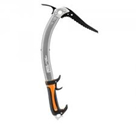 |
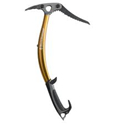 |
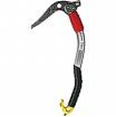 |
| Petzl Charlet - Quark |
Black Diamond - Viper |
Grivel - Matrix Tech |
Mountaineering Harnesses
Most dedicated alpine harnesses are light and easily adjustable. It's useful to have adjustable leg loops and long enough waist belt to get over thicker clothing. Look for these features when buying a new harness but at the end of the day any climbing harness will do as long as it fits and is safe (not 20 years old, faded and frayed round the edges).
Alpine Harnesses
Here are some good harnesses that fit the criteria, all apart from the Alpine Bod would be good for rock and ice climbing as well.
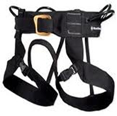 |
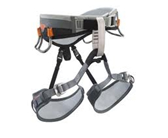 |
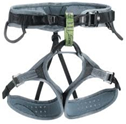 |
| Black Diamond - Alpine Bod |
Black Diamond - Aspect |
Petzl - Adjama |
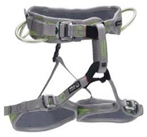 |
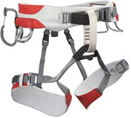 |
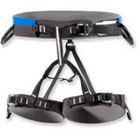 |
| Wild Country - Vision |
Black Diamond - Xenos |
Arcteryx - A300a |
Helmets - Climbing
Helmets fall into two distinct categories plastic and foam injected. The foam ones are very light but don’t stand up to as much abuse. When rock climbing I wear a foam helmet and when mountaineering I use a plastic one. In the mountains helmets get sat on, crushed in your rucksack, bashed by rocks and ice so it's no wonder the foam ones don’t last! There are lots of brands on the market; here are my top four choices.
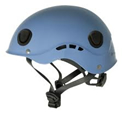 |
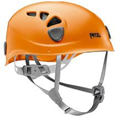 |
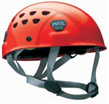 |
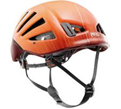 |
| Black Diamond - Half Dome |
Petzl - Elios |
Petzl - Ecrin Rock |
Petzl - Meteor 3 |
Walking Poles
I use these all the time when walking and mountaineering in the summer. On glacier trails and easy mountaineering two poles work very well; on more technical ground I use one pole and an ice axe. As with ice axes you get what you pay for, cheap poles tend to collapse, cease up and break. Most pole manufacturers have switched to a flick lock system rather than a twist lock system. The flick lock systems are far superior, easy to adjust and don't collapse when your least expecting it! Some manufacturers also produce a sectional walking pole that snaps together like a tent pole. These are very light, and fold very small but are not as adjustable as a standard setup.
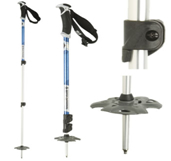 |
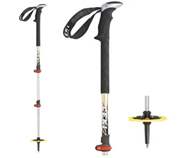 |
 |
| Black Diamond - Expedition Pole |
Leki - Aergon 3 |
Grivel - Himalaya |
This article covers all you should need for some retail therapy. There is no substitute for researching and taking your time in buying and breaking kit in. Your alpine experience will be far more pleasurable with good quality kit you have tested and got used to over a period of weeks, rather than the night before on the plane! As a mountain guide, climber and skier I have spent a considerable amount of my life analysing equipment (very sad, I know! I am positively OCD when it comes to saving weight!!!) testing it then modifying it so it suits my needs.
See you in the summer!
Olly Allen
MBefore hitting the trail you need to make sure you have a sturdy pair of suitable boots. Mountaineering boots are classified by their sole stiffness from B1 to B3. B1 are flexible trekking boots but they will take a strap on walking crampon (C1) and are light and comfortable for walking in. The B1 boots recommended below can be fine for less technical Alpine ascents like Mont Blanc if the weather is not to cold. Any B1 boot that looks a lower spec than the ones shown probably wont be up to the job. B2 boots are stiffer, warmer and will accept a semi rigid or walking crampon (C1 or C2). In alpine summers B2 boots are my favourite, they are a good compromise between comfort ,weight, warmth and dexterity. They're ideal for classic mountaineering and mid-grade mixed climbing. Some are warmer than others so avoid super light boots if doing lots of high snowy peaks like Mt Blanc or Monterosa. B3 boots are fully rigid and give more support for steep ice and mixed climbing. These will take any crampon (C1, C2 or C3). These are less comfortable, heavier and more expensive! I only use these boots when the ice gets over 60 degrees or mixed climbing goes above the alpine grade of TD. Nowadays leather and synthetic boots are very comfortable, breathable and warm. Gone are the days (thank goodness) where you had to clomp up the approach paths to glaciers in some huge, uncomfortable, sweaty plastic monstrosities. These have virtually died out: even in the high altitude environment synthetic composite boots are now king.
B1 Flexible
These are ideal for all glacier trails, via ferrata and easy mountaineering. You might get cold feet in some of them on Mont Blanc though! If you already have some similar lighter weight boots they might do for glacier trails but bear in mind they need to be water proof and have some stiffness to accept a walking crampon. Soft fabric trekking boots won't stand up to the rugged terrain, snow and crampon straps.
 Off-Piste
Off-Piste Ski Touring
Ski Touring Via Ferrata
Via Ferrata Ice Climbing
Ice Climbing Alpine Glacier Trekking
Alpine Glacier Trekking Worldwide Trekking
Worldwide Trekking



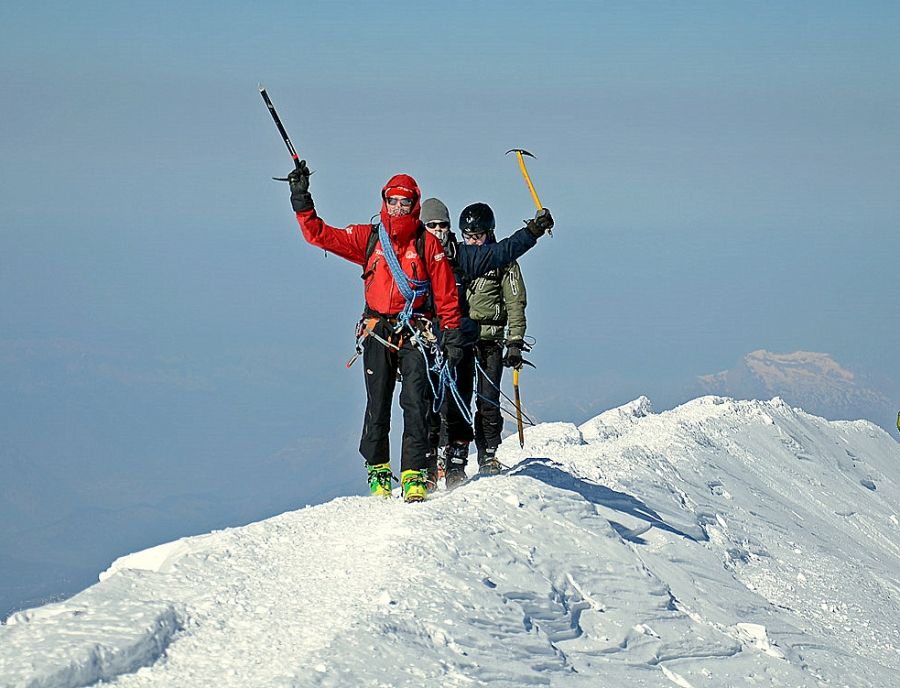






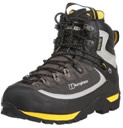
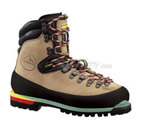
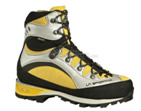
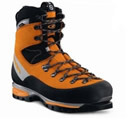
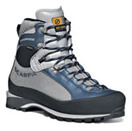
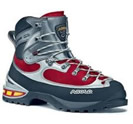









































 Travel Website Development
Travel Website Development